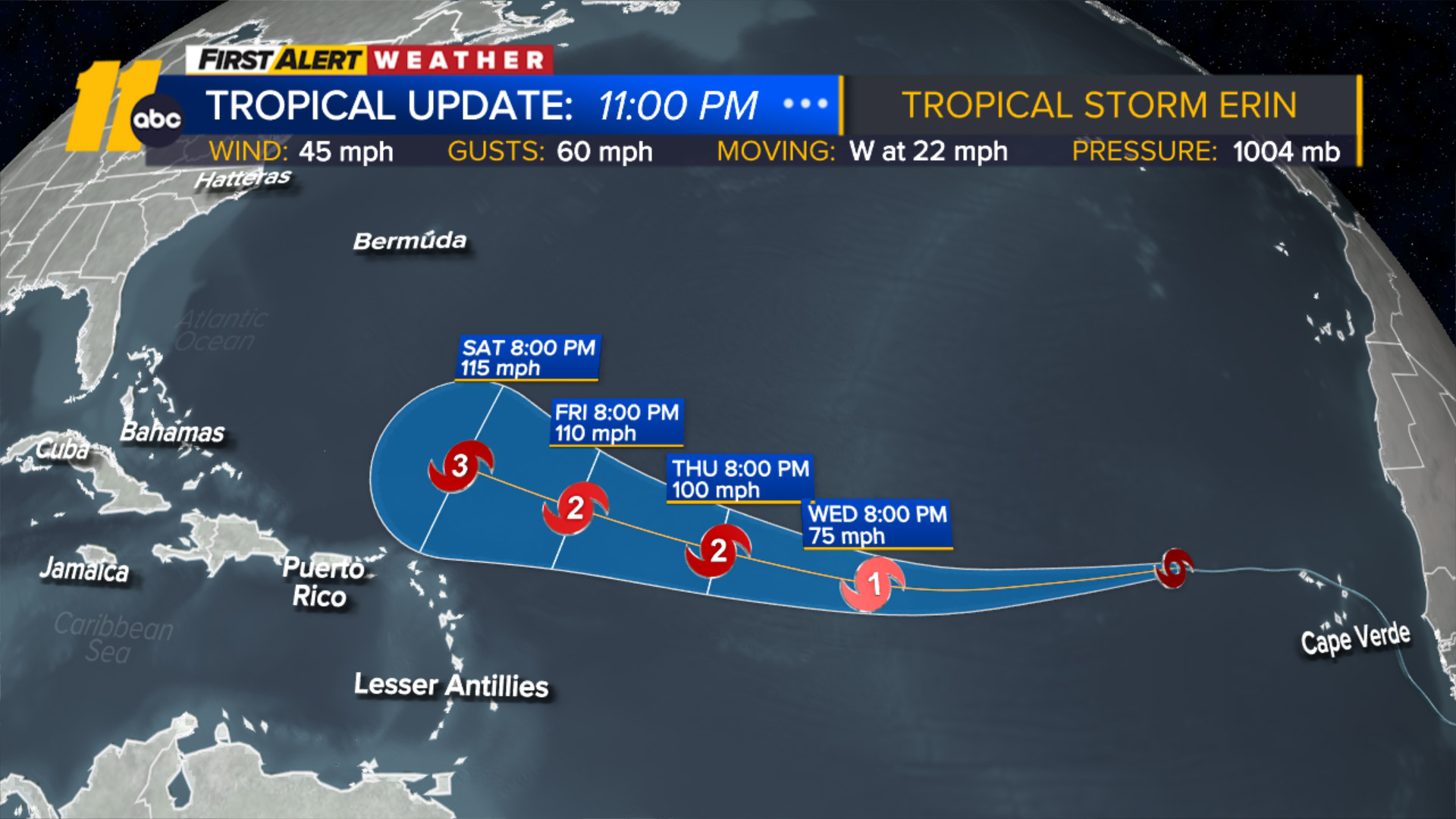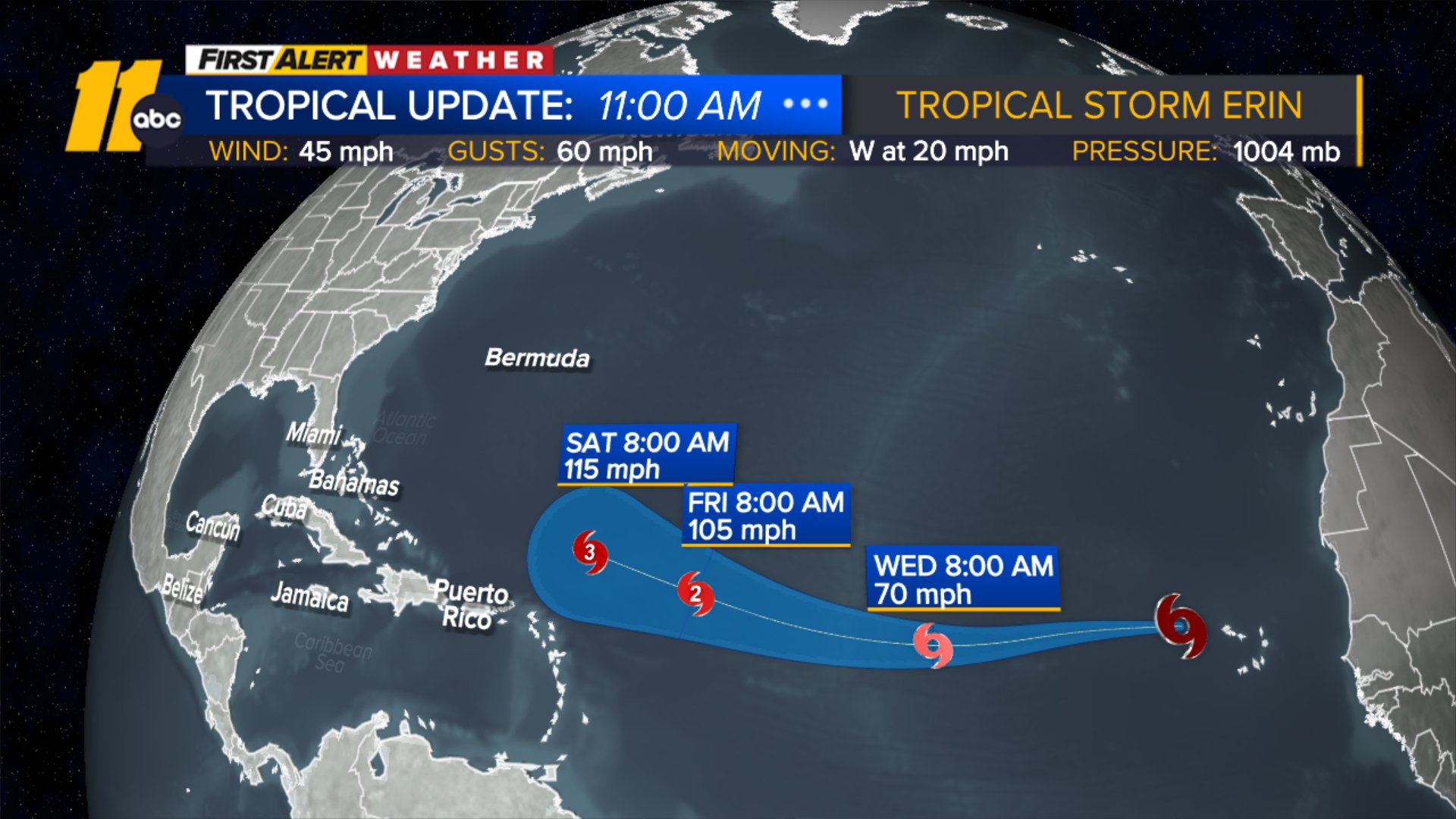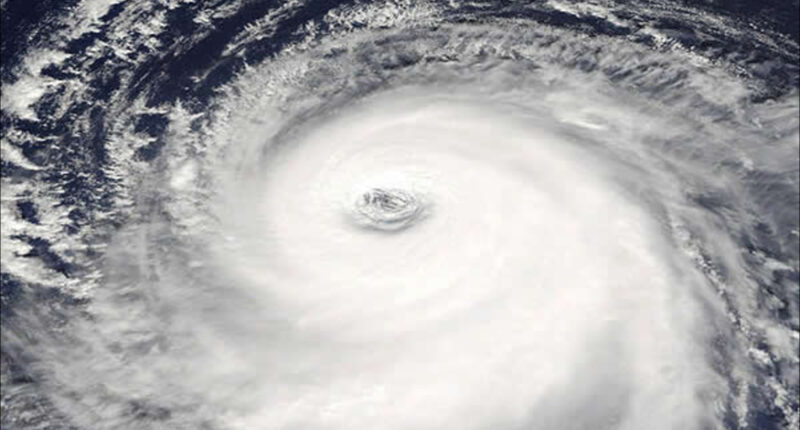Share this @internewscast.com
The National Hurricane Center (NHC) has named the fifth storm of the season, Tropical Storm Erin.
Forecasters predict Erin will strengthen into a Category 1 hurricane by Thursday. If so, it would be the first hurricane of the Atlantic season.
At the 11 p.m. update, Erin maintained 45 mph winds with gusts of up to 60 mph. The storm was moving west at 22 mph.
By Saturday, Erin is expected to intensify into a major Category 3 storm. At that time, it will remain far offshore, so it won’t impact the U.S. coastline this week.

Forecast models suggest Erin will traverse the ocean between Bermuda and the U.S. East Coast from Tuesday to Thursday of next week (August 19-21). With over a week until it could affect land, both Bermuda and the U.S. East Coast are keeping a watchful eye on the system, as any deviation east or west might lead to significant impacts. For now, Erin does not present a direct threat to the U.S.
Typically, the fifth named storm forms by August 22, so we’re 11 days ahead this season. However, the first hurricane of the season usually forms around August 11, so we are on track with that statistic.
NHC is also closely monitoring two other areas in the Atlantic, both showing potential for tropical development.

In the Central Atlantic, a low-pressure trough is generating disorganized showers and thunderstorms. Some gradual development could occur by midweek as the system heads northward, although the formation chances remain low at 10 percent within 48 hours and 10 percent over the next seven days.
RELATED | Big Weather breaks down the essentials of his hurricane emergency kit
In the Northwestern Atlantic, a non-tropical low-pressure area is positioned a few hundred miles south-southeast of Nova Scotia, Canada. Currently, there is minimal shower or thunderstorm activity, but it is drifting over the warm waters of the Gulf Stream. This could slightly increase the likelihood of tropical or subtropical development over the next day or two. By midweek, it is expected to shift northward over cooler waters, likely diminishing any chance for further development. Formation probabilities are low at 10 percent within 48 hours and 10 percent over the next seven days.
NHC has predicted an above-average hurricane season for the Atlantic. August, September and October are the most active months.
Hurricane season ends Nov. 30.
RELATED | Emergency Kit Essentials
Copyright © 2025 WTVD-TV. All Rights Reserved.

















